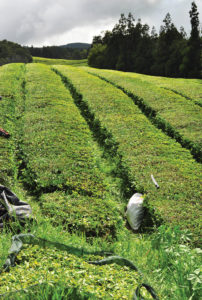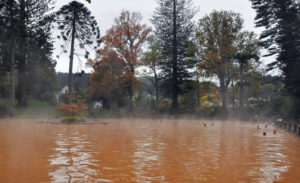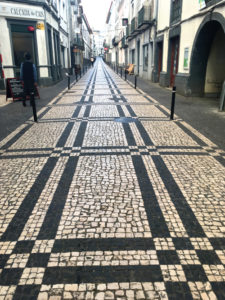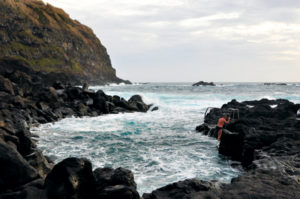 Hi, I’m Katie. Once upon a time I was a kindergarten teacher, and life was pretty good. I loved coming home each day with paint on my hands and funny stories to tell. I got to travel a lot, too. Every time I had a break, I was somewhere new, managing to travel on a very tight budget, and coming home with even better stories to tell. Since then, I started my own travel consulting company, and I’ve collected many moments and mishaps. I’ve haggled, made friends and found hidden gems. I am hooked on getting lost in the world, and I want to show you how wonderful it is, too.
Hi, I’m Katie. Once upon a time I was a kindergarten teacher, and life was pretty good. I loved coming home each day with paint on my hands and funny stories to tell. I got to travel a lot, too. Every time I had a break, I was somewhere new, managing to travel on a very tight budget, and coming home with even better stories to tell. Since then, I started my own travel consulting company, and I’ve collected many moments and mishaps. I’ve haggled, made friends and found hidden gems. I am hooked on getting lost in the world, and I want to show you how wonderful it is, too.
West Virginia native Katie Allie shares her adventures in exploring the Azores, a lesser-known cluster of Portuguese islands nicknamed “the other Eden” where beauty and adventure abound.
By Katie Allie
My morning had begun with stuttering engine parts, two whale sightings and, most importantly, Azorean queijadas in my belly. I have priorities, and rich, buttery cheesecake pastries are one of them, whether there are whales to be seen or not.
 The rest of the morning ticked by in a blur of pine forests and misted farmland, rolling past tea plantations and the occasional palm tree or elephant-sized fern. If that sounds strange, it gets stranger. I was riding an ATV with a group of friends, all of us in a line like a wobbly string of baby ducklings, and we were headed for a spin around the rim of a volcanic caldera. It’s not something I get to say every day, but then the Azores are not an everyday kind of place.
The rest of the morning ticked by in a blur of pine forests and misted farmland, rolling past tea plantations and the occasional palm tree or elephant-sized fern. If that sounds strange, it gets stranger. I was riding an ATV with a group of friends, all of us in a line like a wobbly string of baby ducklings, and we were headed for a spin around the rim of a volcanic caldera. It’s not something I get to say every day, but then the Azores are not an everyday kind of place.
Many people have never heard of the Azores. A part of Portugal, this loose cluster of nine autonomous islands has a heavy Portuguese influence on everything from its architecture to its language, which is officially Portuguese, although many people speak English as well. The islands are known as os Açores, pronounced “Ahh-sor-esh” in Portuguese, and are located about 850 miles west of Portugal. If you look them up on a map, you will see I’m not exaggerating when I say they’re blissfully in the middle of nowhere. During my recent visit, I explored the largest island, São Miguel.
Volcanic in nature, the islands straddle three major tectonic junctions and saw eruptions as recently as the late 1950s, prompting a sudden influx of immigration to the northeastern United States. There is more geothermal activity in the Azores than you can shake a stick at, and where there is geothermal activity, there are hot springs. One can happily spend their days hopping from one hot spring to the next. There are even hot springs in the ocean, but in order to have a soak in them, you have to time your visit with the low tide. I showed up just as the tide was tumbling back in, but the surreally turquoise waters made up for the near miss.
 Not to be deterred by my ill-timed ocean visit, I ventured on to the famous hot springs of Furnas in São Miguel’s Terra Nostra Botanical Park. The gardens were magnificent, filled with trees that are practically—if not literally—living fossils. It was here that I made my second mistake of the day, which I realized immediately after laying eyes on the enormous orange cauldron in which I would be soaking. My bathing suit was white, and thanks to the high iron content of the water, it would soon turn a shade of streaming rust. Truth be told, it was worth the ruined bathing suit. The water was warm for the mild afternoon, and the springs were never crowded. I stayed until well after dark, floating on my back under the mid-Atlantic stars.
Not to be deterred by my ill-timed ocean visit, I ventured on to the famous hot springs of Furnas in São Miguel’s Terra Nostra Botanical Park. The gardens were magnificent, filled with trees that are practically—if not literally—living fossils. It was here that I made my second mistake of the day, which I realized immediately after laying eyes on the enormous orange cauldron in which I would be soaking. My bathing suit was white, and thanks to the high iron content of the water, it would soon turn a shade of streaming rust. Truth be told, it was worth the ruined bathing suit. The water was warm for the mild afternoon, and the springs were never crowded. I stayed until well after dark, floating on my back under the mid-Atlantic stars.
The Azores have an incredible variety of plant life, and one reason for this is their subtropical climate, which keeps both air and sea temperatures relatively stable year-round. That is not to say the ocean water is always warm—unless they’re having an underwater volcanic eruption—but whales and other marine life tend to like it. In fact, they’re around so often, you can swim next to them in the ocean if you’d like after you’ve had your fill of hot springs hopping, canyoning, bird watching, kayaking, hiking or mountain biking.
 Public transportation, even on São Miguel, is limited at best. A car rental is essential and easy, but what they didn’t tell me was that a good map or GPS is just as essential. We rented our little car easily enough and took off sight-seeing with no real plans. Driving in the Azores is generally simple: they use the same side of the road as us, and traffic is nonexistent. Plus, driving with the intention of getting lost is amenable, because you’re practically guaranteed to do so. There was not always reliable signage, and several times over the course of my stay, I accidentally found myself on a mountain path, happily taking in the view in the wrong direction, or waving to locals in their yards as I turned around. The wonderful part about the Azores is that the scenic route is literally all around you, and none of the islands are very big. One minute, I thought I’d made a wrong turn as I began to plunge toward the ocean on a steeply inclined single lane road, when seemingly out of nowhere, a secluded waterfall would appear or a horse pulling a cart loaded with milk jugs would trot past, loaded with deliveries, because yes, this still happens in the Azores.
Public transportation, even on São Miguel, is limited at best. A car rental is essential and easy, but what they didn’t tell me was that a good map or GPS is just as essential. We rented our little car easily enough and took off sight-seeing with no real plans. Driving in the Azores is generally simple: they use the same side of the road as us, and traffic is nonexistent. Plus, driving with the intention of getting lost is amenable, because you’re practically guaranteed to do so. There was not always reliable signage, and several times over the course of my stay, I accidentally found myself on a mountain path, happily taking in the view in the wrong direction, or waving to locals in their yards as I turned around. The wonderful part about the Azores is that the scenic route is literally all around you, and none of the islands are very big. One minute, I thought I’d made a wrong turn as I began to plunge toward the ocean on a steeply inclined single lane road, when seemingly out of nowhere, a secluded waterfall would appear or a horse pulling a cart loaded with milk jugs would trot past, loaded with deliveries, because yes, this still happens in the Azores.
One day during my visit, I drove to Lagoa das Sete Cidades, which translates to Lagoon of the Seven Cities. There, the twin lakes and villages rest literally inside the crater of a now dormant volcano. I will admit that I tried to take a few panoramic photos of the location’s astounding vistas, but I ultimately had to put my camera down and take it in the old-fashioned way. Nothing truly does the scenery justice. As I wound slowly down into the crater, I saw farmland dotted with streams and unfenced livestock, an undulating patchwork of green and blue spread out like a picnic. Mist and fog were common at the top, but every now and then, the mist would part for a minute and I would stop at the overlooks on the side of the road and have a peek. I’m convinced there is not a disappointing view anywhere on São Miguel, and it wasn’t difficult to pass an entire day chasing down vistas on one country road after another.
The roads that crisscross the island are lined with picnic areas and thousands of pastel hydrangeas, making an impromptu stop for lunch my obvious choice. I stocked up on picnic supplies at Ponta Delgada’s Mercado da Graça, where I saw first-hand what a major export pineapple is for these islands and how rightfully proud the islanders are of it. They also had fruits I’d never seen or tried before, like annonas, diospiros and nesperas. I was constantly asking to see or taste or touch something, much to the vendors’ amusement. Azoreans are friendly and easy to talk to, making this West Virginian feel right at home.
 My favorite part of the market was the cheese shop, lined floor to ceiling with wheels of local products from animals that have been eating from pastures right next to the ocean. They had everything from hard, tangy cow’s milk cheeses loaded with umami-filled salt crystals to wheels of goat’s milk cheese that had to be eaten by slicing the top off the wheel and scooping out the cheese with a spoon. I needed little more than a bottle of wine and a loaf of bread to round out my meal.
My favorite part of the market was the cheese shop, lined floor to ceiling with wheels of local products from animals that have been eating from pastures right next to the ocean. They had everything from hard, tangy cow’s milk cheeses loaded with umami-filled salt crystals to wheels of goat’s milk cheese that had to be eaten by slicing the top off the wheel and scooping out the cheese with a spoon. I needed little more than a bottle of wine and a loaf of bread to round out my meal.
My days in the Azores usually ended less dramatically than they began but no less happily. Most nights, I ate traditional Portuguese food in family-owned restaurants. My table was always filled with local wine and plates of arroz de polvo, which is octopus rice; bolinhos de bacalhau, which we call cod fritters; spicy sausage they call chouriço; amêijoas, the local name for clams, or bitoque, a Portuguese dish of steak served with fries and an egg on top. My legs were a little sore from clambering up volcanic hillsides and running through surf on black sand beaches, but my eyes never tired of the view of the other Eden.









2 Responses
I knew it was beautiful, I’ve seen pictures of this astonishing nature but your words made me wish to buy tickets and take the first flight available to go to the Azores. I’ve read this with a smile on my face. Thanks for it, Katie.
I hope you make it someday soon, Millena! Maybe I’ll meet you there!